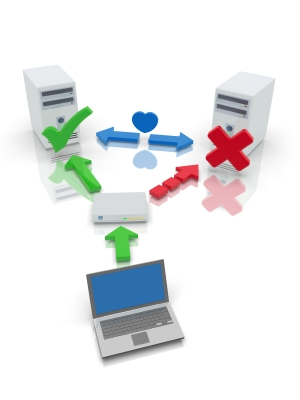 If you’re a vendor providing suppliesfor health care facilities, schools, or hotels, it can be a challenge to keep up with all the various aspects of your business. You have to find new customers and take care of your current ones, all while trying to keep your prices competitive and your costs under control.
If you’re a vendor providing suppliesfor health care facilities, schools, or hotels, it can be a challenge to keep up with all the various aspects of your business. You have to find new customers and take care of your current ones, all while trying to keep your prices competitive and your costs under control.
Meanwhile, you’re dealing with thousands of purchase orders, invoices, and other transactions each year. The procurement process can be very complex, especially as your business grows and develops. Business-to-business procurement automation can simplify your distribution process while saving you money.
What exactly do we mean by “automation”? Are we suggesting that you hand over control of the entire process?
Not at all. Think about it in terms of an automobile. A car has all sorts of automated parts. But cars can’t drive themselves. (At least, not yet!) A car still needs someone to be in control and make the decisions about steering, accelerating and braking.
There’s no one-size-fits-all solution for every vendor, or even for each one of your individual clients. We understand you need a system that is adaptable, flexible, and customizable to meet the needs of your growing business and your various customers. That’s why we've built numerous customizable features into our innovative automated solution. And you can always add or change features quickly and easily.
Procurement Partners is committed to bringing value and savings to our vendor partners. Working together, we can create a positive ongoing commerce experience for you and your customers. Our tools, information, and automation can help promote communication and accuracy between you and your clients while increasing your sales and lowering your costs.
With Procurement Partners, you are always in the driver’s seat, but we’re there to help keep things running efficiently. Contact Us to learn more.
/Prime-Care-Technologies-Logo.png?width=191&height=55&name=Prime-Care-Technologies-Logo.png)

 According to experts, disaster recovery (DR) is how a business restarts itself following a disruptive incident that is natural, man-made, or a systems failure. On the other hand, business continuity implies a more comprehensive consideration of how your business continues to operate not only following a disaster, but also the departure of a key member of your management team or department head or any other incident or event which could interfere with daily operations.
According to experts, disaster recovery (DR) is how a business restarts itself following a disruptive incident that is natural, man-made, or a systems failure. On the other hand, business continuity implies a more comprehensive consideration of how your business continues to operate not only following a disaster, but also the departure of a key member of your management team or department head or any other incident or event which could interfere with daily operations. With prices rising, it may be time to take a closer look at procurement. For many businesses, the
With prices rising, it may be time to take a closer look at procurement. For many businesses, the 
